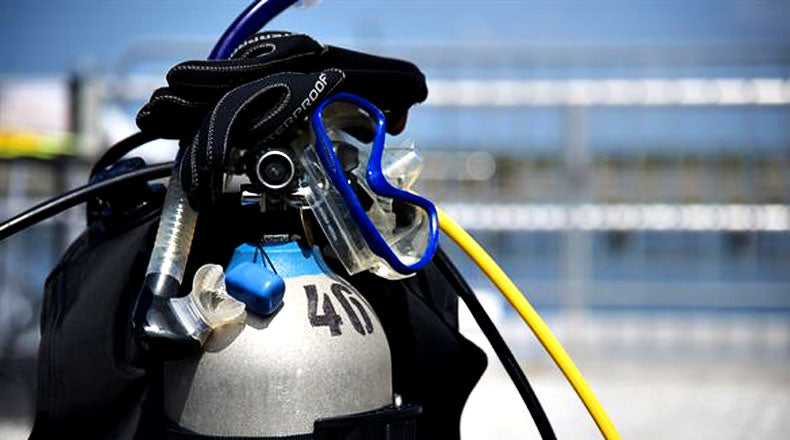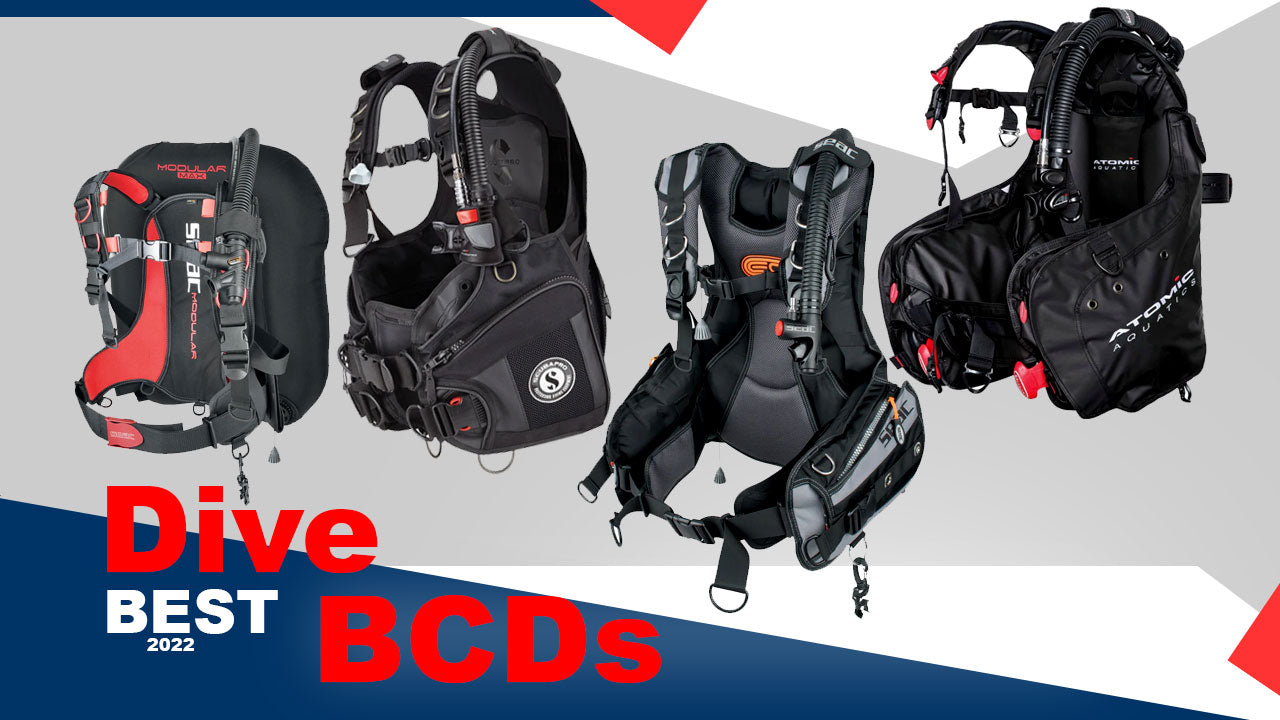Packing Your Scuba Gear for Travel

Packing your scuba gear for travel can be quite a chore. You need to make sure everything fits in your bag, valuable and fragile items are protected and you are under the airline weight limit (if you’re traveling by plane). So, here are a few tips on how to get all of your gear around the world safely without breaking the bank.
1. Inspect Your Gear
The very first thing you need to do before you even start to think about packing your scuba gear for travel is ensuring that it’s in good working order and ready for underwater performance. Go through everything and inspect it for any issues or damage. You don’t want to come to a remote dive location to find that your dive computer battery is dead or your second stage diaphragm is torn. Check the dump valves on your BCD, inspect the condition of all hoses and O-rings, test/replace all batteries, etc. You may also consider taking your gear for professional inspection and servicing if you haven’t done so in a while.
Pre-Dive Equipment Check and Setup Guide
You can read more about pre-dive equipment check in this article.
How Often Should You Have Your Scuba Gear Serviced
Here is an article on how often you should have your scuba gear serviced.
2. Learn the Baggage Weight and Size Limits
Another thing worth doing before you start packing is to check the baggage weight and size limits, especially if you are traveling by plane. Airline baggage rules are constantly changing, and the generous weight limit on a past trip may be lower today. The good news is that every airline is required to publish its baggage allowance and overage charges so travelers know what they’re getting into.
Most standard airline companies will allow 50 lbs (23 kg) of checked in luggage and somewhere between 15 and 35 lbs (7-15 kg) in the carry-on if you take an economy class ticket. With low-cost companies, in Europe or Asia, checked in luggage will almost always be an extra cost you need to add to the price of the flight ticket itself.
Some airline companies have special treatment for scuba divers. Here are a few examples of scuba-friendly airlines:
- Garuda Indonesia allows you to bring up to 50 lbs (23 kg) of scuba gear free of charge to anywhere it flies, in addition to your free baggage allowance.
- Egypt Air, carrying many divers to the Red Sea, also offers up to 50 lbs (23 kg) of scuba gear within the free baggage allowance.
- Sri Lankan Airlines gives an extra luggage allowance of 9 kg (20 lbs) for scuba divers.
- Turkish Airlines allow one set of diving equipment per person to be carried free of charge. This only works for certain destinations, however, so be sure to check if your destination is on the list.
- Air Tahiti gives divers an additional baggage allowance of 50 lbs (23 kg).
- Etihad Airways states that scuba diving equipment can be included as part of your baggage allowance as long as it weighs no more than 32 kg (70.5 lbs).
Remember to check this before purchasing the ticket in case the conditions change.
You can also save on luggage fees by being loyal to one airline, as most loyalty programs will give you extra baggage perks.
3. Make a List
Write a list of everything you think you’ll need for the trip.
In addition to your personal items, documents and essential scuba gear (regulator, octopus, BCD, pressure and depth gauges/dive computer, fins, mask, snorkel, and appropriate exposure protection) don’t forget to take such useful accessories as:
- boat and/or dry bag;
- surface signaling devices;
- dive knife or cutting tool;
- mask defog;
- certification cards;
- logbook;
- dive insurance card;
- chargers/spare batteries for all your electronic devices;
- electrical voltage converter/adapter.
Once you are ready to pack, lay all your gear out where you can see everything and cross it off the list only after you’ve put it in the bag.
4. Pack Your Gear in a Specific Way
First, let’s talk about what you’re going to pack your gear into. A good choice is to use a piece of luggage designed specifically for scuba equipment. There are a number of high-quality scuba travel bags available from various manufacturers. They are lightweight and tailored to fit and protect your scuba gear. You can also get special protective bags for the most fragile and expensive pieces of equipment, such as a dive computer regulator and mask.
Now, let’s move on to how you’re going to pack your gear. If you just throw everything into your travel bag with no rhyme or reason it may not fit well and won't be as protected as it could be. There are a few good ways to pack scuba gear, here is an example of one:
BCD - because most BCs take up a lot of room and there’s not much you can do with them, it’s best to pack your buoyancy compensator first, using it as a cushion for the rest of the equipment. Make sure all the air is out, and simply lay your BCD on the bottom of the gear bag, flattened out and centered in the bag. If you travel frequently, consider purchasing a travel BC. They are typically lighter and take up less room than your standard BC.
Fins - put one on either side of the BCD, this way they won’t take up much space, won’t bend and will help protect the rest of your gear. You can also put your fins in special side pockets if your bag has those.
Snorkel - pack your snorkel in a side pocket with your fins or put it between one fin and your BCD.
Booties - if you are bringing booties put them on the bottom of the bag below the BCD.
Regulator - if you want to pack your regulator in your check-in luggage, put it in a special regulator bag and place it inside the BCD. Regulator bags are reinforced to protect the delicate reg mechanism and they accommodate the hoses perfectly to keep them from twisting and possibly cracking. If you don’t want to buy a regulator bag, wrap your reg in some clothes or a beach towel. You can also carry your regulator on if that makes you more comfortable. Again, make sure it is well-cushioned, either put it in a separate padded bag or wrap it in clothes.
Mask - most masks come in a hard plastic container, which you can use when packing your scuba gear for travel. Simply place the box with the mask in the BCD above your regulator. If you want to save some space, you can also place your mask inside a fin pocket.
Dive knife - if you carry a dive knife, make sure to pack it in your checked luggage, since it is not allowed aboard the plane. Before packing, check if the sheath holds the knife securely. For added safety, you can also wrap it in a towel to prevent the knife from accidentally puncturing your gear.
Save-a-Dive Kit - pack a small save-a-dive kit. This should include a mask strap, fin strap, mouthpiece, zip ties, small scuba tool, and ear drops.
Wetsuit - put your wetsuit over the top of everything else to add even more padding for your gear. Avoid folding your wetsuit too many times, as this will just make it bulkier and may create creases in the neoprene. Two folds should be good enough for it to fit in your bag and lay flat.
Dive computer - this is the one thing you really don't want to be thrown around, so your dive computer should always go in your carry-on. It is also a good idea to travel with the battery out of the computer. This way if there is a problem with the battery it doesn't ruin the computer. Plus there is no way the computer can turn on accidentally and waste the battery.
Tanks and weights - in most cases it’s best to leave your tanks and weights at home. They will always be provided by the dive store/boat you will be diving with. If you do choose to carry your own personal small emergency air source, make sure the valve is out of the cylinder and it can be inspected at your time of departure.
5. Weigh and ID Your Bags
Invest in a special luggage scale and weigh your bag, once you’re done packing. This may save you from those high excess baggage fees. Also, don’t forget to ID your bags inside and out. Finally, it may seem obvious, but when you’re done diving, you need to dry your gear thoroughly before packing it for a return trip. A wetsuit can easily contain a few pounds of water. A BCD that has not been emptied properly after rinsing can also add extra weight. So, make sure to dry your equipment correctly and weigh everything again once packed.





![9 Best Dive Computers in 2024 [Reviewed & Updated] - DIPNDIVE](http://dipndive.com/cdn/shop/articles/best_computers2.jpg?v=1658752532)
